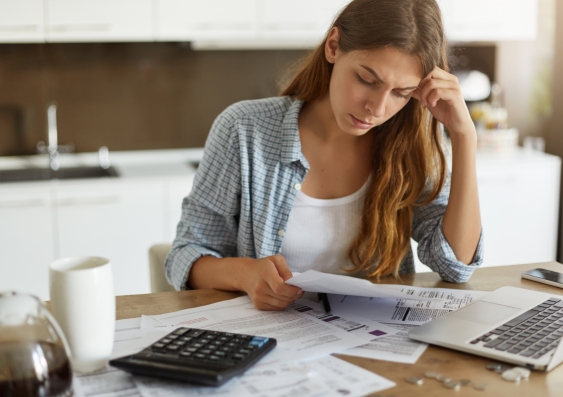Wealth gap widening: new report
2024-04-18T09:10:00+10:00

A UNSW Sydney and ACOSS partnership report has revealed the latest wealth and income inequality data.
New research by ACOSS and UNSW Sydney has shown the widening wealth gap between people with the most and least, even as income inequality decreased.
Inequality in Australia 2024: Who is affected and how? shows the average household wealth of Australia’s highest 10% growing much faster than the lowest 60%, from $2.8 million to $5.2 million (an 84% increase) over the past 20 years. Meanwhile, the average wealth of the lowest 60% has risen from $222,000 to $343,000 (a 55% per cent increase).
Nearly half (45%) of the increase in household wealth since 2003 went to the highest 10% (those with at least $2.6 million) and half of this increase to wealthy older people (over 64 years).
Wealth inequality is also growing among households aged under 35, even though they hold just 5% of all wealth. The average wealth of the highest 10% under 35 rose from $928,000 to $2 million (an increase of 126%) since 2003. At the same time, the average wealth of the lowest 60% of younger households – largely excluded from home ownership – rose just $68,000 to $80,000 (39%).
The report also shows wage inequality falling between 2021 and 2023, when unemployment dropped below 4%. During that time, wages growth for the lowest 10% (up 4.9%) outpaced the highest 10% (up 3.3%).
But ACOSS CEO Cassandra Goldie warned that rising unemployment, driven by higher interest rates, would be disproportionately felt by people relying on income support as low as Jobseeker at $55 a day.
“These disturbing figures show that people with the lowest income and least wealth are being left behind by the increasing inequality in Australia,” she said.
“Without major reform to housing, superannuation tax breaks and income support, the divide between those with the most and those with the least will continue to deepen.
“The fastest and most efficient way to support those worst affected by income inequality is by raising the rate of JobSeeker to at least the pension rate of $80 a day.
“Reducing tax concessions for negative gearing and capital gains, as well as superannuation, that speed wealth accumulation among the highest 10% and increase housing prices would help stem growth in wealth inequality.”
Income inequality
Scientia Professor Carla Treloar from UNSW Sydney said this research showed that the main cause of income inequality is unequal distribution of earnings, through inequality of paid working hours and hourly wages.
“It shows, too, that the solid increase in employment over the past couple of years has reduced individual earnings inequality.
“The answers are clear – full employment reduces inequality. Increasing income support payments reduces inequality. Reducing those tax concessions that disproportionately benefit those with the most reduces inequality.”
UNSW Sydney Vice-Chancellor and President Professor Attila Brungs said: “The Poverty and Inequality Partnership between ACOSS and UNSW draws on the strengths of both organisations to understand and address the drivers of poverty and inequality in Australia.
“Through high-quality research and advocacy, the Poverty and Inequality Partnership provides evidence-based insights that help focus the national attention on how we can do better for the millions of Australians who experience poverty and inequality.
“Highlighting where policies create unfair outcomes is important to drive positive change and create a more just and equitable society.”
Key findings
Income inequality:
- The top 10% of households by weekly income take home an average of $5248 after tax, more than three times the middle 20% ($1989) as well as six times the lowest 20% ($794).
- The main cause of income inequality is unequal distribution of earnings, driven by inequality of paid working hours and hourly wages.
- Lower income brackets are more likely to include people receiving Jobseeker and related payments, sole parents, families whose main income-earner is a woman and adult migrants born in non-English speaking countries.
- Income support and family payments reduce inequality by 9% and income tax by 29%.
See where you stand in the income spectrum with our income calculator, available at: https://bit.ly/4aRfK08
Wealth inequality:
- Nearly half of all wealth is held by the top 10% of households, worth an average $5.2 million each. They hold 15 times the wealth of the lowest 60% ($343,000 per household).
- Over half of the wealth (53%) of older households was owned by one-sixth of older people. They had an average wealth of $5.6 million, comprise 4% of all households but hold 18% of all wealth.
- The average over-65 household is 25% wealthier (with $1.58 million) than the average middle-aged household (with $1.26 million) and almost four times as wealthy as the average under-35 household (with $410,000).
See where you stand in the wealth spectrum with our wealth calculator, available at: https://bit.ly/3xsVnb5
Read the full report, part of the Poverty and Inequality Partnership.
Media enquiries
Isabelle Dubach, Senior News & Content Manager
Tel: +61 432 307 244
Email: i.dubach@unsw.edu.au






